The Puxton Moor reserve is made up of mature hedgerows, and grazed fields and moor surrounded by a network of ancient ditches. The ditches have SSSI status because of their water plants such as Wolffia and Frogbit.It is a local dragonfly hotspot, with 20 species of dragonfly and damselfly seen, including 16 species that breed there. There are three notable species that are not widespread in our area, Hairy dragonfly, Scarce Chaser, and Variable Damselfly, all early season species (end of April to end of June).
Dragonfly Monitoring at Puxton Moor
By Gareth Roberts
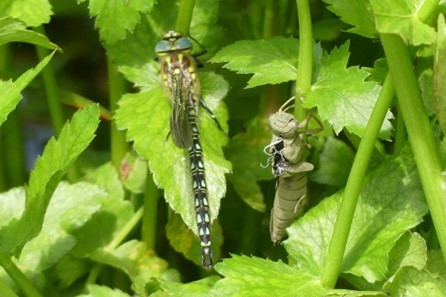
(Hairy Dragonfly after emerging from its larval case (exuvium), before expanding its wings)
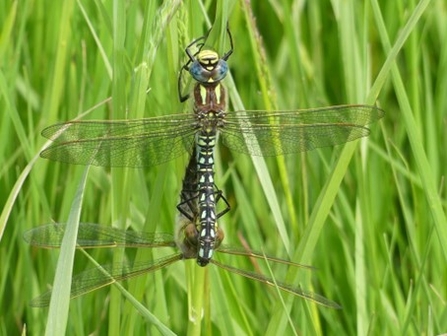
(Hairy Dragonfly after emerging from its larval case (exuvium), before expanding its wings)
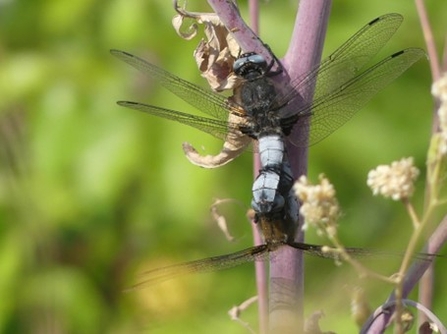
(Scarce Chasers mating, the female is grasping the male around the abdomen.)
Individual dragonflies live for a few days to a few weeks and each species has a flight period to maximise breeding opportunity. The season lasts from late April to late October and there is plenty to see in July and August, including the impressive Emperor and Brown Hawker Dragonflies, and the busy Four-spotted Chaser.
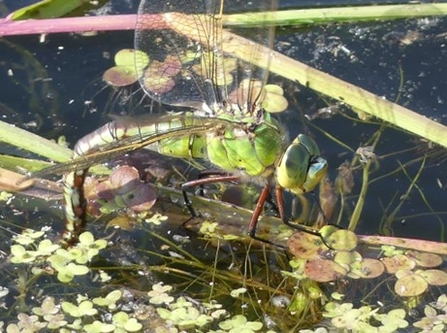
(Female Emperor ovipositing.)
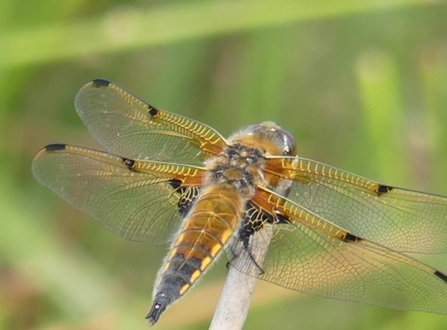
(Four-Spotted Chaser. They often return to the same perch.)
Variable and Azure Damselflies are blue damselflies seen between May and August, and have similar behaviour and habitat, preferring ditches to river, and can be difficult to tell apart. The males are blue and the females can be blue, green, or yellow.
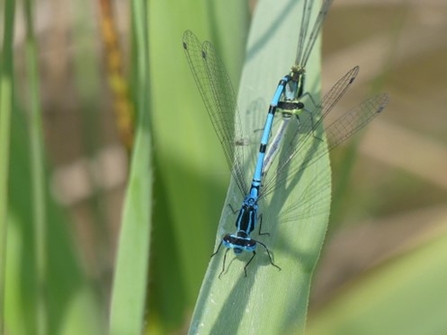
(Azure Damselflies. The male has uninterrupted thoracic stripes and a “cup” pattern on the upper abdomen.)
Emerald Damselfly emerges later and is seen from July to September. Small Red-eyed Damselfly has a similar flight period and has spread westwards from the continent in recent years, and is now common in our area.
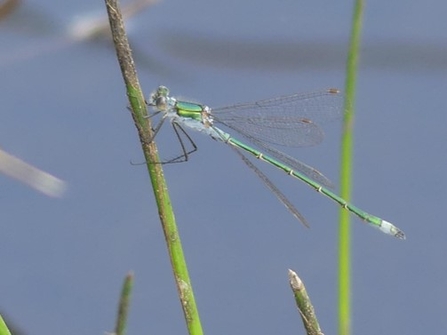
(Emerald Damselflies keep their wings partially open at rest.)
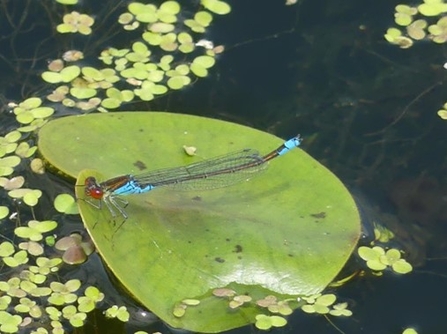
(Small Red-eyed Damselflies are seen floating on leaves or algae on the river.)
In high summer the darters, medium sized dragonflies, emerge. Common Darter is more abundant than Ruddy Darter and can have mass emergence on certain days.
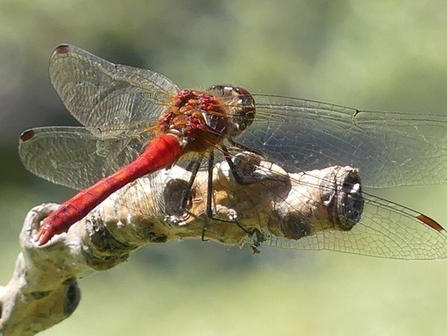
(Ruddy Darter has black legs and a waisted abdomen.)
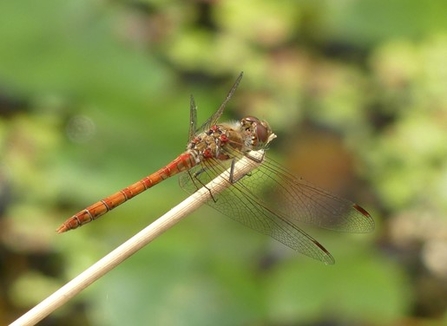
(Common Darter has a pale line down the legs.)
Common Darters are seen from July to the end of October. The larger Migrant Hawkers emerge in August and are also seen through September and October.
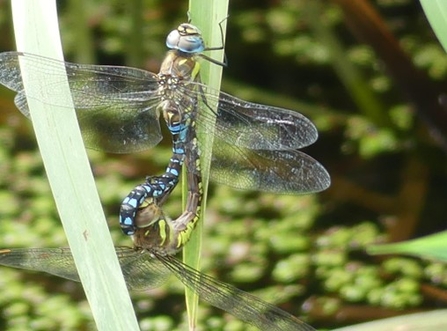
(Migrant Hawkers mating.)
Like all dragonflies and damselflies they are best seen on calm sunny days, but will be active on any warm dry day.
Words and Photographs by Gareth Roberts, volunteer warden
